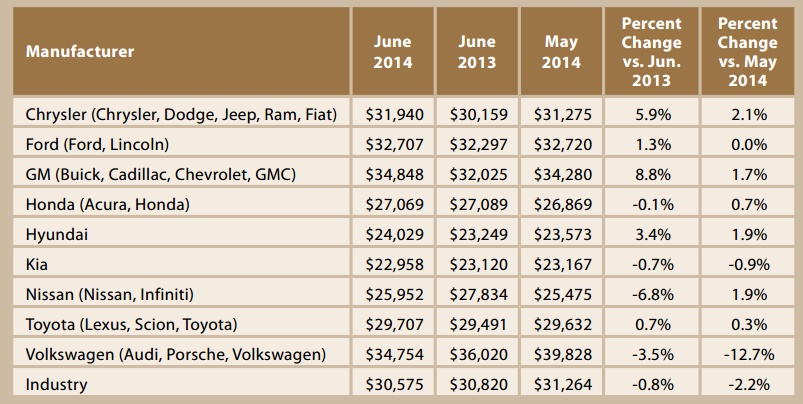Five-star safety rating
Noteworthy for car shoppers: The Mazda3 recently earned a five-star overall crash rating by the National Highway Traffic Safety Administration (NHTSA). Rated for front, side, rear and rollover crash tests, the mid-sized sedan achieved top ratings in all categories except the rollover crash test, where it scored a four-star rating. Its safety features include electronic stability control, antilock brakes and daytime running lights, as well as optional safety features such as lane-departure warning, forward obstruction warning and blind-spot monitoring. For more information visit http://www.prnewswire.com/news-releases/the-2015-mazda3-receives-five-star-crash-rating-265397691.html.
Airbag safety
Over the next couple of years, car makers and their suppliers will have to meet new passive-restraint safety requirements, as well as reduce costs and improve the quality of component testing. In 2014, 50 percent of all vehicles, under a gross vehicle weight of 10,000 pounds, built after Sept. 14, will be required to meet new side-impact requirements (FMVSS 226); 75 percent will be required to do so by 2015, and 100 percent by 2016. Most manufacturers are expected to modify current side-impact airbag curtains to meet the new standards. Elsewhere in the world, other passive restraint rules are taking effect as well. In Brazil and Argentina, for instance, front airbag systems are now required for all passenger cars and other light vehicles. Frontal airbags have proven to reduce fatalities in frontal crashes by up to 25 percent and reduce serious head injuries by more than 60 percent, according to INFICON Automotive in North America. Globally, more than 300 million airbag systems are produced annually, and the number is expected to grow 8 percent annually through 2016. In fact, most new cars are equipped with as many as 12 airbags. Examples of airbag systems currently in production or under development, include:
- Side curtain airbags, designed to decrease life-threatening head injuries in side impacts.
- Dual-chamber side airbags, designed to protect chest and pelvic areas.
- Knee airbags, designed to reduce hip, thigh and knee injuries.
- Anti-slide airbags, which raise the front portion of a seat cushion to prevent the occupant from sliding under the seatbelt, helping to reduce knee, hip and thigh injuries for belted passengers.
- Bag-in-belt systems, or combinations of seatbelt and airbag, designed to reduce the load on an occupant’s ribcage in front collisions.
- Far-side airbags, which inflate between seats and prevent the sideways movement of occupants.
Hit the road, Jack
Planning a late summer vacation? Farmers Insurance offers the following travel tips:
- Check belts, brakes and fluids. Before leaving your garage or driveway, be sure to check all the belts and brakes for wear and tear, as well as the fluids. Belts control the air conditioning compressor, power steering pump, alternator and water pump. The brakes are one of the most essential safety mechanisms on the vehicle. Grinding, pulling, brake dust and squeaking are just a few signs that the brakes and brake pads may need to be checked or replaced. It is also important to check a vehicle’s fluids, including coolant, oil and washer fluid.
- Share the driving. One person shouldn’t assume this responsibility.
- Avoid potholes. Leaving a bit more space between one’s car and the one ahead will help avoid uncomfortable hops and bounces, while keeping oneself and one’s passengers safe. When drivers hit a significantly large pothole, they should check their vehicle’s alignment, as it can negatively affect steering and suspension.
- In case of a roadside emergency, pull over safely. Drivers should use their hazard lights, flares and other roadside indicators to alert other drivers they may need assistance. Lifting the hood of your car, whether there’s trouble with your engine or not, helps gain attention from fellow motorists or roadside assistance technicians. Important items to have in the car include a first aid kit, fire extinguisher, extra water and food, and a properly inflated spare tire.
Sales reps beware
Few would dispute that driving a vehicle while drowsy is a recipe for disaster. Yet, it appears the trucking industry is looking to weaken the safety rules for truck drivers. The Senate Appropriations Committee recently voted to suspend a new Department of Transportation regulation that requires truck drivers to take at least 34 hours off after working 60 consecutive hours in seven consecutive days or 70 hours in eight days. The issue attracted attention following a recent accident in which an allegedly drowsy truck driver crashed into a van carrying comedian Tracy Morgan, critically injuring him and killing another passenger on the New Jersey Turnpike. According to government data, over the past five years, collisions that have involved at least one commercial vehicle over the size of 10,000 pounds have steadily increased, and deaths in these accidents have increased by approximately 18 percent.
Market price
Did you overpay for your car? TruCar Inc., a negotiation-free car buying platform, estimates that the average transaction price for light vehicles in the United States was $30,575 in June 2014, down $245 (-0.8 percent) from June 2013 and down $689 (-2.2 percent) from May 2014. The company provides the following comparisons:
Average Transaction Price

Leave a Reply